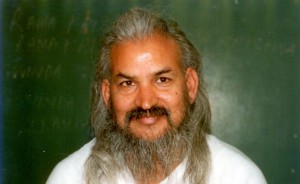Guruji

Lectures
Talks and Articles
Audio
Video
About Guruji
Guruji equated religion with spirituality and all his teachings as well as his own life reflect that conviction.
Guruji was actively involved in inter-faith understanding and global peace movements, most of these founded by himself since 1950, some 25 years prior to his use of mechanical vehicles and his setting foot outside India. This concern continued after his arrival in North America and is reflected in his work outside India. His work in India did not stop either. His very tangible and concrete work is exemplified in the Punjab mediation in the late eighties and in the Ayodhya – Ram Janmabhumi mediation in the early nineties. This work continued to the last minutes of his life; his meeting with a delegation which had come to recruit him to mediate on a dispute amongst two factions of Hindus related to Ayodhya took place an hour before his death in Delhi, India on 22 April, 1994.
Guruji was the first Jain monk to leave the shores of India and to use mechanical transportation while continuing to remain a Jain monk (See Guruji Opens Doors).
Guruji was revered by Hindus as much as, and sometimes even more, than he was revered by the Jains. Guruji was also equally revered by Sikhs and Muslims. This was one of the main reasons why he was chosen as a mediator and was acceptable to all sides irrespective of their faiths and beliefs. Guruji himself said that we are all Hindus and that Hindu was not a religion but a culture. It was thus that he was the founding member of the Vishwa Hindu Parishad as well as its last surviving founding member. It was also thus that he encouraged the setting up of Hindu-Jain temples in many cities across North America. It was also thus that a Hindu organisation and a Hindu academic invited him to U.S.A. and were his sponsors when he first arrived to U.S.A.
In spite of his public profile, Guruji’s own practices of meditation and yoga and worship required seclusion. Guruji did a lot of meditation and sadhna in seclusion over long period of time and had his own experiences to base his spiritual teachings on. Guruji’s own teachings were mostly practical in that he taught chanting of mantras and pranayam and meditation. He established Kundalini Science Centre in 1977. He conducted countless seminars and sessions devoted to the practice of yoga. His lectures over these years were also related to yoga and meditation. Guruji was not departing from the Jain teachings in as much as Lord Parshwanath, the twenty-third Tirthankar himself followed the Yogik path. Guruji’s Song of the Soul was published in 1986. In this publication, Guruji sets out a practical manual for harnessing the power of sound through the Mantras and the Root Sounds and explains the powers of the latent Kundalini.
During the initial few years of Guruji’s stay in North America, Guruji established Ashrams in the traditional sense and his disciples in the Ashram were mostly from the mainstream society (not born Jains). The traditional Jain society became more involved first by participating in the yoga-meditation camps and later through Guruji’s visits across North America and through the activities leading to several Jain and Hindu-Jain temples. The numbers of traditional Jains increased with the activities leading up to the consecration of the Jain Temple and Jain Tirth in 1991 and this flow has kept increasing year after year.
Guruji’s other work continued and the concepts of the University of Non-violence gathered some momentum in the last five years. I.M.J.M. also became an N.G.O. member of United Nations and Guruji brought his mission to the global scale. It was thus that he led a delegation to mediate with Sadaam Hussain to prevent the Iraq-Kuwait confrontation. This delegation was comprised of religious leaders of all faiths from India. The delegation spent 15 days in Teheran waiting for an entry into Iraq and a meeting with Sadaam, who had been contacted but then was constantly on a move. A meeting was never held as the events unfolded such as to render any travel within Iraq impossible.
To sum up, Guruji was a power-house of spiritual energies. He gave children as much attention as he did to potentates and presidents. His teaching was imparted on a personal basis – to the thousands of people for whom he was always available at all hours. He did not deliver sermons. He reached out to the inner-self, even when lecturing to very large audiences. His message was very simple – it was the message of Lord Mahavir, who taught: Remain still, maintain silence, enter/fall into state of meditation and disperse/dissolve yourself. It was this practice which Guruji said would lead one into the natural and unconditioned state of the Self (soul) in which one would identify with all living beings and with the environment and with all matter. Non-violence and universal love was inherent in the soul. Religion was song of the soul. It was not a matter of dogma or of doctrinaire beliefs. Guruji found fundamentalism totally unacceptable. He taught that no one has monopoly on truth and that there is multiplicity in truth.

